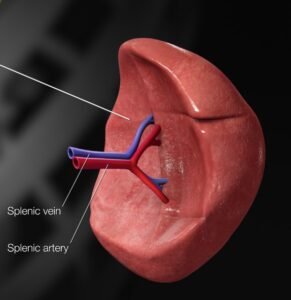Vaccine
Dengue vaccine - Greenbook Summary
Vaccine Description and Composition "The dengue vaccination Qdenga® is a tetravalent live attenuated vaccine. It is produced in Vero cells by recombinant DNA technology and contains serotype-specific surface protein genes of the four dengue serotypes, engineered into a dengue type 2 backbone." Storage and Presentation "Vaccines should be stored in the original packaging at +2C̊ […]
Yellow fever vaccine: study note
Vaccine: Coadministration with other vaccines It can be co-administered (on different limbs /the same limb 2.5 cm apart) with other inactivated and most live vaccines, except MMR, which should be given 28 days apart. If yellow fever and MMR were given together due to the immediate need for protection, repeat vaccine doses should be considered individually. […]
Shingles vaccine: study note
Two licensed shingles vaccines are available in the UK: Zostavax® and Shingrix®. Zostavax® Shingrix® Live vaccine? Live attenuated vaccine Recombinant vaccine (Not live) Strain/ component Derived from the OKA/Merck strain of the Varicella Zoster Virus Contains varicella-zoster virus glycoprotein E antigen produced by recombinant DNA technology, adjuvanted with AS01B Route The vaccine is given IM or Subcutaneous, preferably in the […]
Japanese encephalitis vaccine: study note
Vaccine Inactivated vaccine (IXIARO®), NO live virus.Adjuvant: Aluminium hydroxide (improves immunogenicity).Storage: +2°C to +8°C and protected from light. Administration Primary immunisation Primary immunisation should ideally be completed at least one week before potential exposure to the Japanese encephalitis virus. Full immunity takes up to one week to develop after the second dose. Standard schedule Rapid schedule 1st dose […]
Rotavirus vaccine (study note)
Vaccine Efficacy– Protect against gastroenteritis due to rotavirus serotypes G1P, G2P, G3P, G4P, and G9P; some efficacy against uncommon rotavirus genotypes G8P and G12P.– Over 85% effective at protecting against severe rotavirus gastroenteritis in the first two years of life. Administration of the vaccine Rotarix® should not be given to infants under 6 weeks of age.WHO recommends infants should […]
Greenbook notes: Pertussis (Whooping cough) vaccine
Pertussis vaccine Pertussis vaccine is only given as a part of a combined vaccine. Monovalent pertussis vaccines are not available. Vaccines are stored at +2˚C to +8˚C, protected from light. Excess heat – reduces potency and shelf-life.Excess cold/freezing – increases reactogenicity and loss of potency; it may also cause hairline cracks on the ampoule leading […]
What prophylaxis is recommended in splenectomy patients?
Patients with an absent or dysfunctional spleen (AoDS) are at increased risk of infection, especially with capsulated bacteria. What are the organisms that can cause infection in patients with AoDS? Prevention of infection – vaccines, antibiotic prophylaxis Antibiotic What is the risk of sepsis?The risk of death from sepsis is 600 times more than the […]

